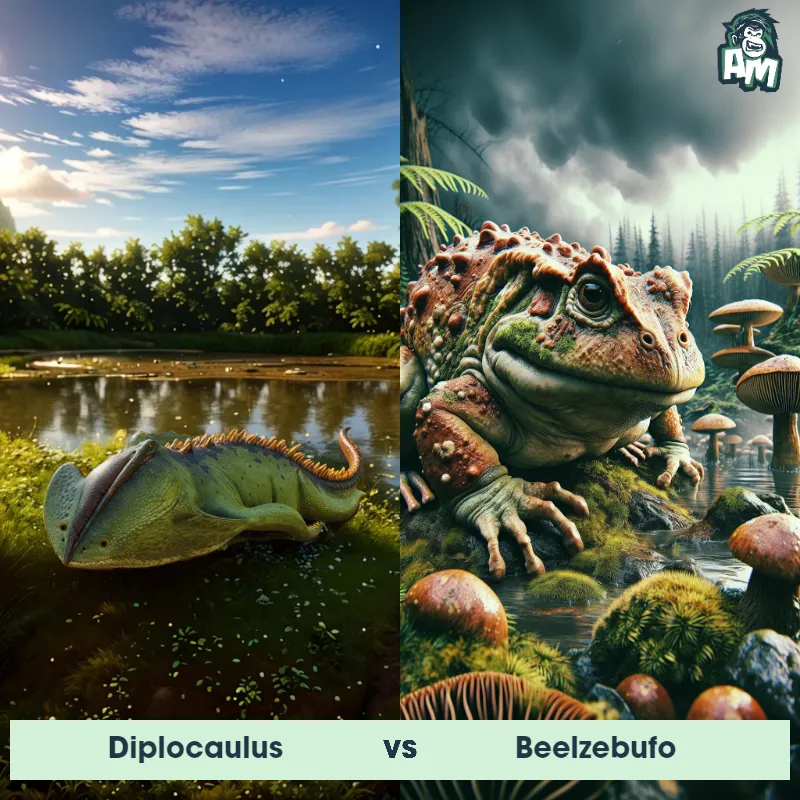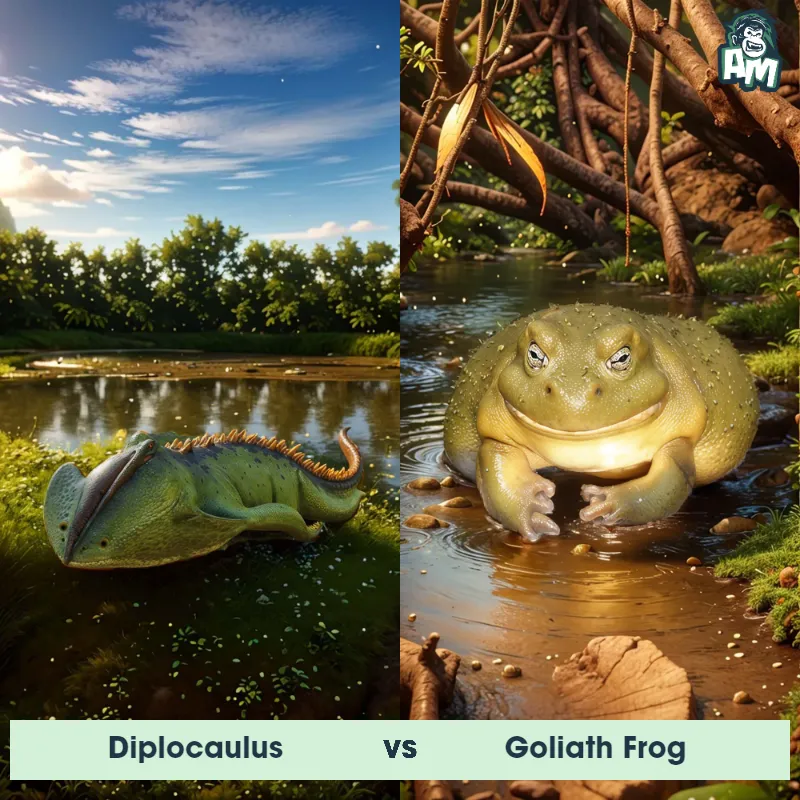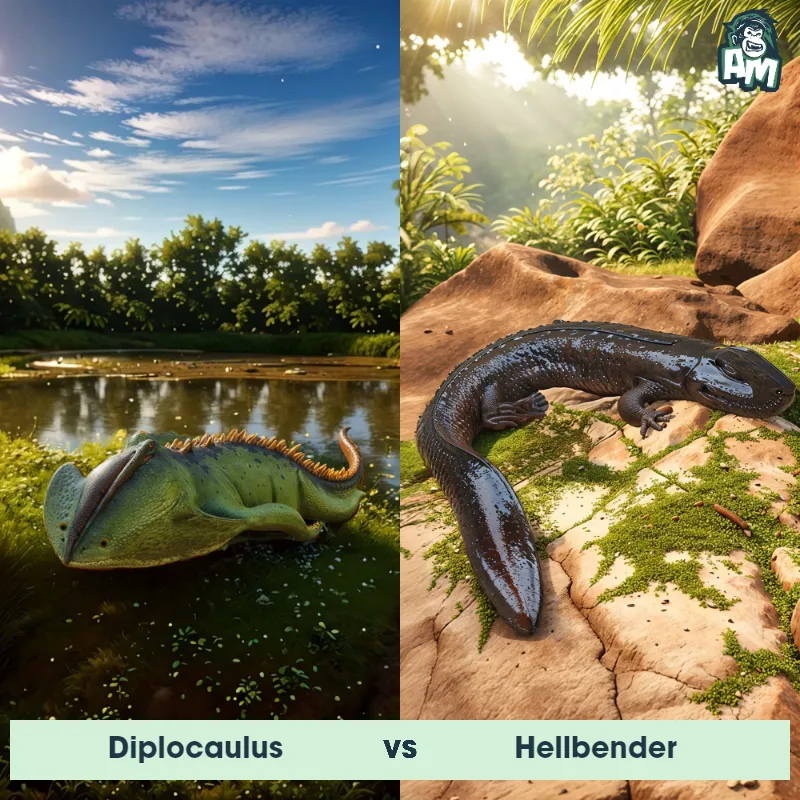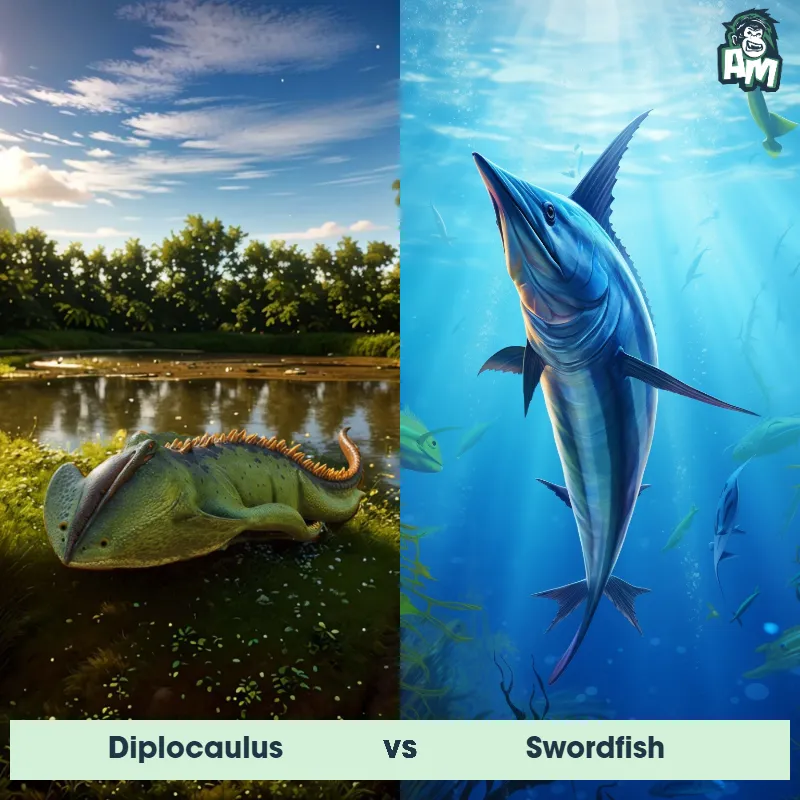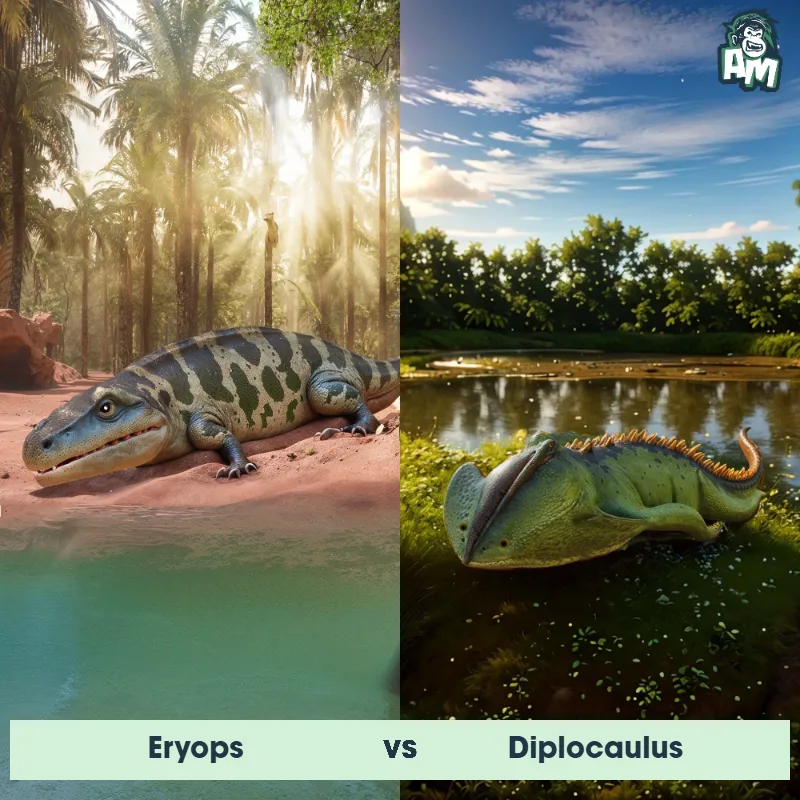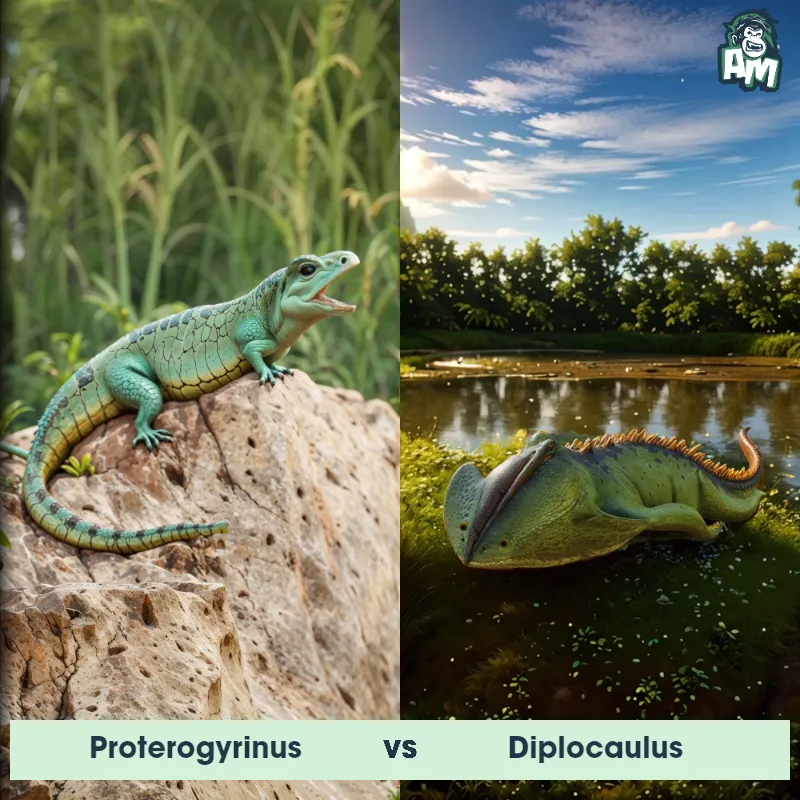The Diplocaulus
The Diplocaulus, commonly known as the "Boomerang-headed amphibian," was a prehistoric creature that lived during the Permian period. It had a unique appearance with a boomerang-shaped skull and a short, bulky body. This amphibian had small limbs and likely lived in freshwater habitats, using its unique shape for swimming.
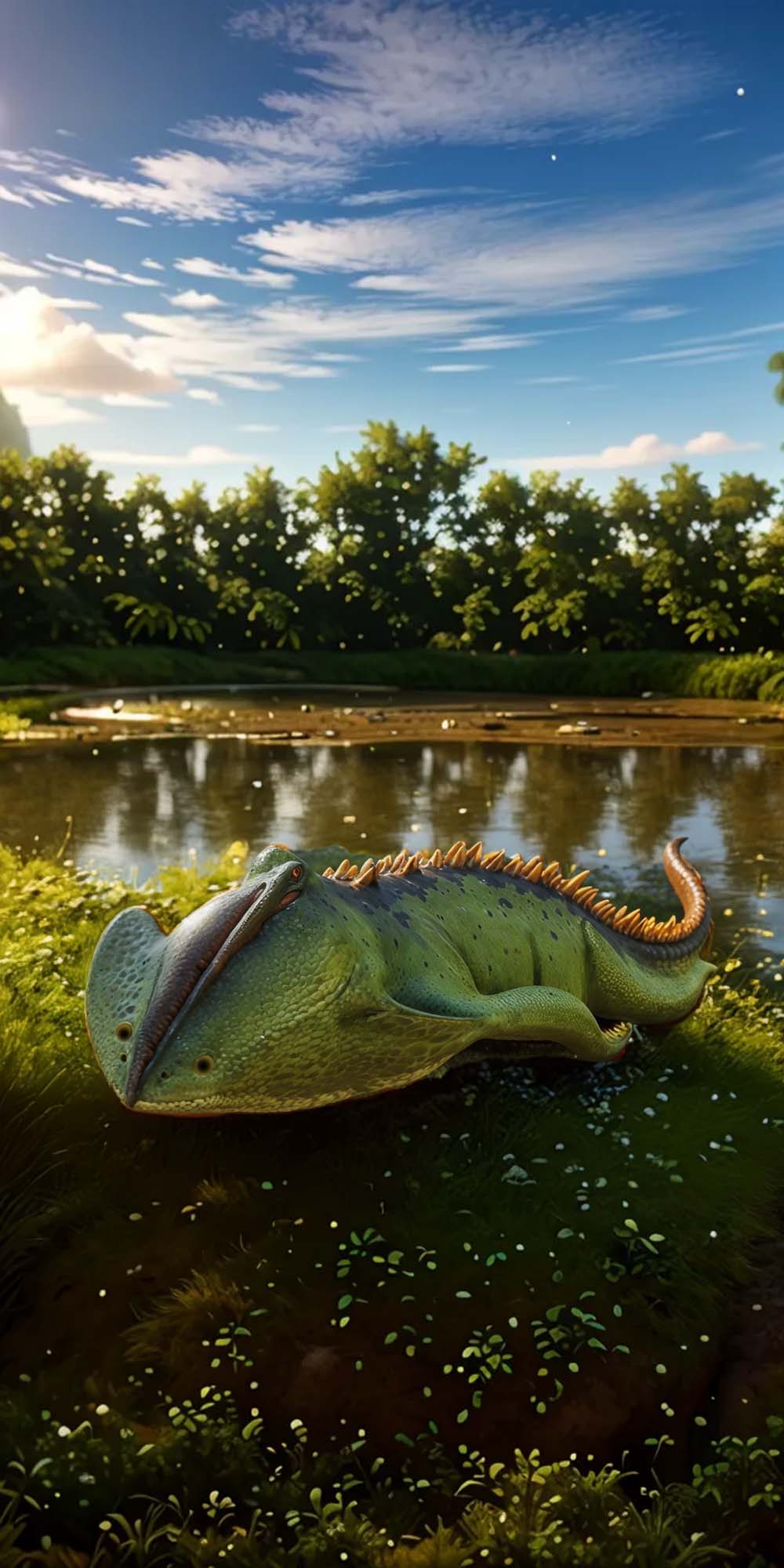
| Diplocaulus | |
|---|---|
| Size | Approximately 2-3 feet (60-90 cm) in length |
| Weight | Around 10-20 pounds (4.5-9 kg) |
| Speed | 7 mph (11 km/h) |
| Key Strength | Speed and agility in water |
| Biggest Weakness | Vulnerability on land |
| Scientific Name | Diplocaulus |
| Family | Diplocaulidae |
| Habitat | Freshwater |
| Geography | North America |
| Diet | Small fish and aquatic organisms |
| Lifespan | 10 years - 15 years |

The Diplocaulus
The Diplocaulus, commonly known as the "Boomerang-headed amphibian," was a prehistoric creature that lived during the Permian period. It had a unique appearance with a boomerang-shaped skull and a short, bulky body. This amphibian had small limbs and likely lived in freshwater habitats, using its unique shape for swimming.
Fun Fact: Diplocaulus had a particularly bizarre skull shape that served a specific purpose - it is believed that the boomerang shape helped the animal remain buoyant in water by providing stability and balance.
| Diplocaulus | |
|---|---|
| Size | Approximately 2-3 feet (60-90 cm) in length |
| Weight | Around 10-20 pounds (4.5-9 kg) |
| Speed | 7 mph (11 km/h) |
| Key Strength | Speed and agility in water |
| Biggest Weakness | Vulnerability on land |
| Scientific Name | Diplocaulus |
| Family | Diplocaulidae |
| Habitat | Freshwater |
| Geography | North America |
| Diet | Small fish and aquatic organisms |
| Lifespan | 10 years - 15 years |
Diplocaulus Matchups
We use AI to simulate matchups between the Diplocaulus and other animals. Our simulation considers size, strength, and natural predatory behaviors to determine the most likely outcome.
Diplocaulus: Diet, Predators, Aggression, and Defensive Behaviors
What do Diplocaulus eat?
Diplocaulus are carnivorous amphibians that primarily prey on small fish, invertebrates, and insects. They use their wide, flat skulls to create suction in water, allowing them to quickly catch their prey.
Do Diplocaulus have any predators?
While Diplocaulus are relatively small amphibians, they do have predators such as larger fish, aquatic reptiles, and prehistoric sharks. These predators often target young or weakened Diplocaulus individuals.
Are Diplocaulus aggressive?
Diplocaulus are not typically aggressive animals. They are more known for their docile behavior and tendency to flee from potential threats rather than confront them.
Do Diplocaulus fight?
Diplocaulus do not engage in aggressive territorial disputes or fights with other individuals of their species. They are more likely to use their agility to evade potential conflicts rather than resort to physical confrontation.
How do Diplocaulus defend themselves?
Diplocaulus have a unique defensive strategy to protect themselves from predators. They are able to quickly hide under rocks or other underwater structures using their streamlined bodies and agile movements to escape danger.
What is Diplocaulus' biggest weakness in a fight?
Despite their agility and defensive tactics, Diplocaulus' soft underbelly is their biggest weakness in a fight. If a predator manages to flip them over or attack their vulnerable underside, they are at a significant disadvantage.
Fun Fact: Despite its amphibian classification, Diplocaulus was not closely related to modern frogs or salamanders. Instead, it belonged to a group called Temnospondyls, which were diverse and widespread during the early stages of vertebrate evolution.
Fun Fact: Diplocaulus likely had a diet consisting of small fish, invertebrates, and other aquatic creatures, using its sharp teeth to capture prey. Its unique skull shape might have also helped it catch food efficiently in the water.



